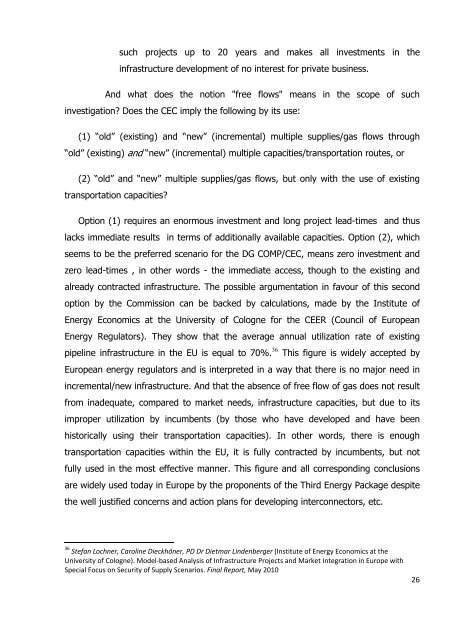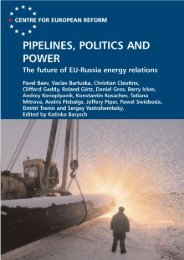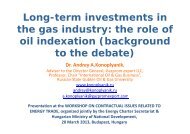Oil, Gas & Energy Law Intelligence
Oil, Gas & Energy Law Intelligence
Oil, Gas & Energy Law Intelligence
You also want an ePaper? Increase the reach of your titles
YUMPU automatically turns print PDFs into web optimized ePapers that Google loves.
such projects up to 20 years and makes all investments in theinfrastructure development of no interest for private business.And what does the notion "free flows" means in the scope of suchinvestigation? Does the CEC imply the following by its use:(1) “old” (existing) and “new” (incremental) multiple supplies/gas flows through“old” (existing) and “new” (incremental) multiple capacities/transportation routes, or(2) “old” and “new” multiple supplies/gas flows, but only with the use of existingtransportation capacities?Option (1) requires an enormous investment and long project lead-times and thuslacks immediate results in terms of additionally available capacities. Option (2), whichseems to be the preferred scenario for the DG COMP/CEC, means zero investment andzero lead-times , in other words - the immediate access, though to the existing andalready contracted infrastructure. The possible argumentation in favour of this secondoption by the Commission can be backed by calculations, made by the Institute of<strong>Energy</strong> Economics at the University of Cologne for the CEER (Council of European<strong>Energy</strong> Regulators). They show that the average annual utilization rate of existingpipeline infrastructure in the EU is equal to 70%. 36 This figure is widely accepted byEuropean energy regulators and is interpreted in a way that there is no major need inincremental/new infrastructure. And that the absence of free flow of gas does not resultfrom inadequate, compared to market needs, infrastructure capacities, but due to itsimproper utilization by incumbents (by those who have developed and have beenhistorically using their transportation capacities). In other words, there is enoughtransportation capacities within the EU, it is fully contracted by incumbents, but notfully used in the most effective manner. This figure and all corresponding conclusionsare widely used today in Europe by the proponents of the Third <strong>Energy</strong> Package despitethe well justified concerns and action plans for developing interconnectors, etc.36 Stefan Lochner, Caroline Dieckhöner, PD Dr Dietmar Lindenberger (Institute of <strong>Energy</strong> Economics at theUniversity of Cologne). Model‐based Analysis of Infrastructure Projects and Market Integration in Europe withSpecial Focus on Security of Supply Scenarios. Final Report, May 201026












